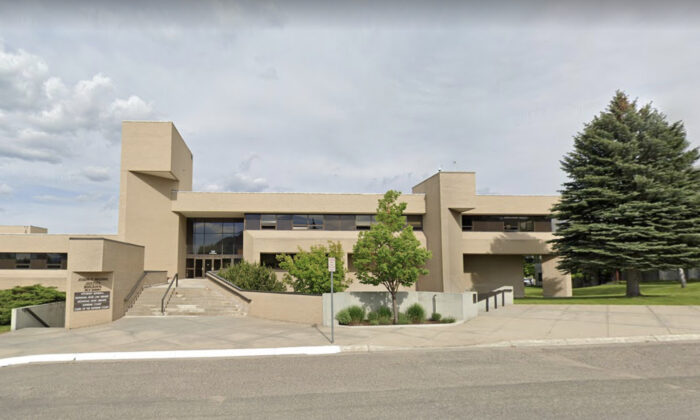
It’s the first days of school with students. I’ve taught a few classes, though there hasn’t been much teaching, really. I went over what we would be doing during the semester with seniors, and seniors know what’s what.
I enjoy seeing their tired faces as they know they must ratchet up their game to get into a competitive college. Our school is in a well-resourced suburb. This year as I teach, a cadet-gray rectangle of plastic inside a translucent container hangs at my waist — I prefer it on my belt to it hanging from my neck.

It has a button. During a meeting the week before students arrived, I learned if I push the button three times, administrators will come running. If I push the button eight times, lights will flash, warnings will sound, and the police will arrive and know our location.
We’ll do as we’ve been trained. As the presenter said, “Seconds count!” The push-button device will save seconds. And that, the logic goes, will save lives.
Politely, no one during the presentation asked how much it costs to outfit our district with these push-button devices. A school system in Green Bay, Wisconsin, considered spending $1.8 million .
A North Carolina school district is suing the company that manufactures my newest teaching tool because it didn’t function reliably. After years of intruder drills — hearing dummy shots fired in school and watching my colleagues trip over each other as they rushed into rooms to build a blockade — I’ve grown numb to the reminders at the start of school that at any moment, a shooter may arrive with high-capacity magazines or bump stocks or bombs. Fatalistically, students I taught at a school in a city where many young people died because of gunfire taught me there’s no sense in worrying about it because if it’s your time, it’s your time.
So I don’t worry. Not about a disaffected youth who would, with one quick trigger pull, far surpass my eight button pushes. What I do worry about is the thinking behind the misdirection of our resources.
This thinking is based on fear I’ve witnessed only in suburban communities, which is turned into a profit for companies like the one that supplies my push-button device. Are suburban students more in danger than students living in cities across the United States? I live near where Mike Brown was killed 10 years ago, and I heard teachers complain about Black male students wearing hoodies until Trayvon Martin was fatally shot and then suburban schools became hotbeds of social justice and equity initiatives. Because I witness our tax dollars supporting a war in Gaza, I ask: How many times must a teacher push a button to get Americans to consider who is really in danger at home and around the world? I met students one recent morning for classes titled Social Issues in Literature.
I stopped myself from saying, “Don’t push my buttons or I’ll push mine eight times!” But I did share quotes upon which I frame our class. “Prisons do not disappear social problems, they disappear human beings. Homelessness, unemployment, drug addiction, mental illness, and illiteracy are only a few of the problems that disappear from public view when the human beings contending with them are relegated to cages,” Angela Davis writes.
I asked my students: What are the forces that drive a human being to do something criminal? How does our country make sure we don’t think about those forces? My students have seen many of John Green’s Crash Course YouTube videos, so I quoted him: “Public education does not exist for the benefit of students or the benefit of their parents. It exists for the benefit of the social order.” That raised a few eyebrows.
I asked: How does our suburban high school classroom here differ from a high school classroom in East St. Louis, and how did those classrooms get that way? My suburban students live the safest lives on our planet. Black students who bus from the city of St.
Louis to our school — part of a volunteer transfer program that was phased out — know the truth. Students where I first taught know the truth: Americans will fund a war that crushes the lives of children across the sea and let city schools crumble next door to suburbs if it thinks it will keep its safest citizens even safer. If we think a faster response to a school shooter with the push of a button is the answer, we are deeply and fundamentally misled.
If we want to understand the structural problems with our schools, the answer hangs from my belt. We allow our government and corporations to manipulate our fear for a profit at the expense of young people who need a real education to get to a revolution that, as one poet said, will not be televised. Adam Patric Miller has taught high school for 25 years in three states and currently teaches in St.
Louis. He is the author of the book “ A Greater Monster .” Submit a letter, of no more than 400 words, to the editor here or email letters@chicagotribune.
com ..














